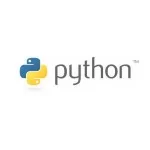Pandas vs. PySpark: A Java Developer’s Guide to Data Processing
Data processing has become a fundamental task for developers working with large datasets. As a Java developer, transitioning to Python-based tools like Pandas and PySpark can open doors to powerful data processing techniques, especially for big data analytics. In this guide, we will compare Pandas and PySpark, highlighting key differences, advantages, and use cases to help you choose the right tool for your projects.
1. What is Pandas?
Pandas is a Python library that provides high-level data structures and methods to manipulate and analyze data efficiently. It is primarily used for small to medium-sized datasets that fit into memory (RAM), which is ideal for most day-to-day data analysis tasks.
1.1 Key Features of Pandas:
- DataFrames: The core data structure in Pandas, similar to a table in a relational database, with labeled axes.
- In-memory Processing: All data is loaded into memory, making it faster for small to medium datasets.
- Rich Functionality: Offers a wide range of functions to handle missing data, merge datasets, and perform complex aggregations.
- Integration with Python Ecosystem: Easily integrates with other Python libraries like NumPy, Matplotlib, and SciPy.
2. What is PySpark?
PySpark is the Python API for Apache Spark, a distributed computing framework designed for big data processing. Unlike Pandas, PySpark is specifically built to scale across large datasets that may not fit in memory, making it ideal for big data analytics and distributed computing.
2.1 Key Features of PySpark:
- Distributed Computing: Can process large datasets by distributing the load across multiple nodes in a cluster.
- RDD (Resilient Distributed Dataset): Provides fault tolerance and distributed data processing.
- In-memory Computation: Spark performs computations in-memory, but it can scale to handle terabytes or petabytes of data.
- Integration with Hadoop: PySpark integrates seamlessly with Hadoop and HDFS, allowing developers to tap into vast big data infrastructure.
3. Comparing Pandas and PySpark
| Feature | Pandas | PySpark |
|---|---|---|
| Data Size | Small to Medium Datasets (fits in memory) | Large Datasets (Distributed) |
| Performance | Fast for small datasets | Optimized for big data and parallelism |
| Scalability | Not ideal for large datasets | Excellent for large-scale data processing |
| Ease of Use | Intuitive API, suitable for data scientists | More complex, designed for big data engineers |
| Integration | Integrates with Python libraries like NumPy | Integrates with Hadoop, Spark, and big data tools |
| Parallelism | Single-threaded execution | Multi-threaded and distributed execution |
| Use Cases | Data cleaning, analysis, visualization | Big data processing, machine learning, ETL |
3.1 When to Use Pandas?
- Small to Medium Datasets: If your dataset fits in memory and you need to quickly explore, clean, or visualize the data, Pandas is often the go-to tool.
- Exploratory Data Analysis (EDA): Pandas is perfect for prototyping and experimenting with data analysis and statistical modeling.
- Simplicity and Speed: For projects where simplicity and ease of use are paramount, Pandas offers an intuitive API for handling common tasks like merging, reshaping, and filtering data.
3.2 When to Use PySpark?
- Big Data: If you are dealing with datasets that are too large to fit into memory or need to be processed in parallel, PySpark is the clear choice.
- Distributed Computing: PySpark is designed for environments with large clusters, allowing you to take advantage of distributed systems for big data processing.
- Integration with Big Data Ecosystem: If your data is stored in Hadoop, HDFS, or cloud platforms like AWS S3, PySpark offers seamless integration with these big data technologies.
- Scalability and Fault Tolerance: PySpark’s RDDs ensure that computations are fault-tolerant and can scale to petabytes of data without running into memory issues.
4. Pandas or PySpark: Which One Should You Choose?
- Choose Pandas if you are working with small to medium datasets, and you prioritize simplicity, speed, and Pythonic tools for data analysis.
- Choose PySpark if you are dealing with large datasets, need to scale your computation across multiple machines, or require integration with big data tools and frameworks.
As a Java developer, you may already have experience with distributed computing systems like Hadoop and Spark. While these systems often use Java-based APIs, Python’s PySpark API allows you to leverage Spark’s distributed processing power for Python-based big data workflows.
5. Conclusion
Both Pandas and PySpark have their places in the data processing world. While Pandas excels in smaller-scale projects where simplicity is key, PySpark shines when dealing with massive datasets that require distributed computing power. As a Java developer, you’ll find that transitioning to PySpark for big data projects is relatively straightforward, while Pandas will continue to serve as an excellent tool for quick data analysis and prototyping. Understanding the strengths and weaknesses of each will help you decide which tool to use based on your project needs.



